Types of Pliers and Their Uses [with Pictures]
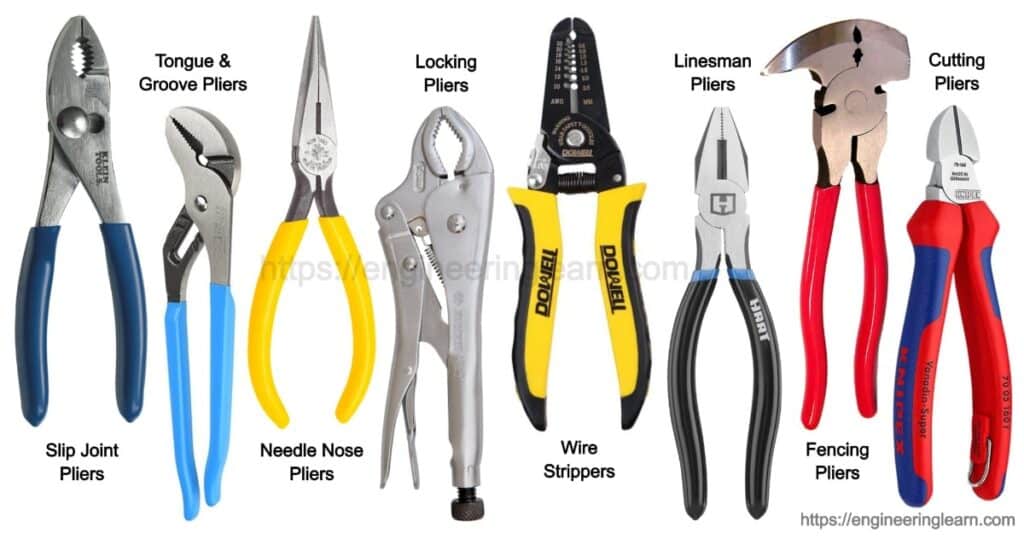
8 Major Types of Pliers and Their Uses :- Pliers are referred to as some of the handiest tools as they are mostly used for cutting, twisting, clamping and many more technical operations. While selecting a plier one must always look on the handle material, considering how tight the hinge will feel and how precisely the cutting surface will take place and also the overall quality of the tool.
8 Major Types of Pliers
There are 8 types of pliers which are commonly known to mankind in order to fulfil their site conditions. A detailed theory about all pliers are given below, Scroll down to know more:
1. Slip Joint Pliers: ( Types of Pliers )
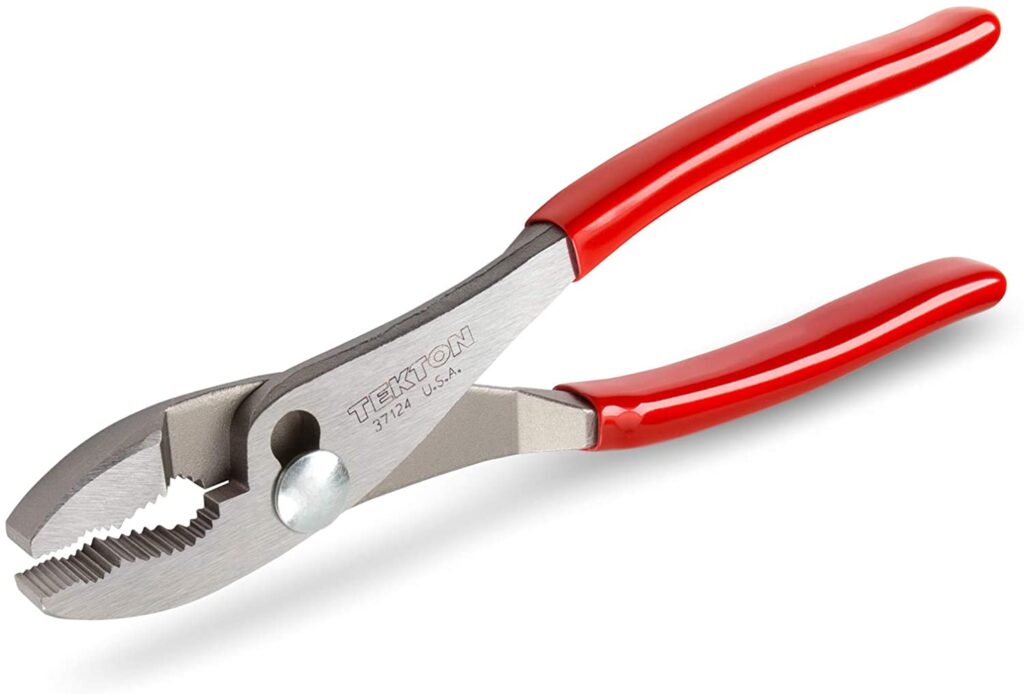
A slip joint plier got its name from the slip joints. These are the types of pliers which have an adjustable pivot point that allows the two pieces of the plier to move and also extends the range of the jaws. These pliers are found gripping well the materials of varying thickness.
The jaws of the slip joint consist of two parts first at the mouth which has the flat jaws with serrated texture in order to give higher gripping at the flat surfaces. The jaws are found having a curve out in order to grip the rounded surfaces, for instance pipes and rods.
These are various other types of pliers for the general purpose and are very common in the tool kits. They work quite well in a variety of gripping applications, which depends on the particular plier feature and can find some help in applications like bending, holding, crimping metal, looping wire and cutting wire. At the end the slip joint pliers are really handy tools which must be around you while working.
2. Tongue & Groove Pliers: ( Types of Pliers )
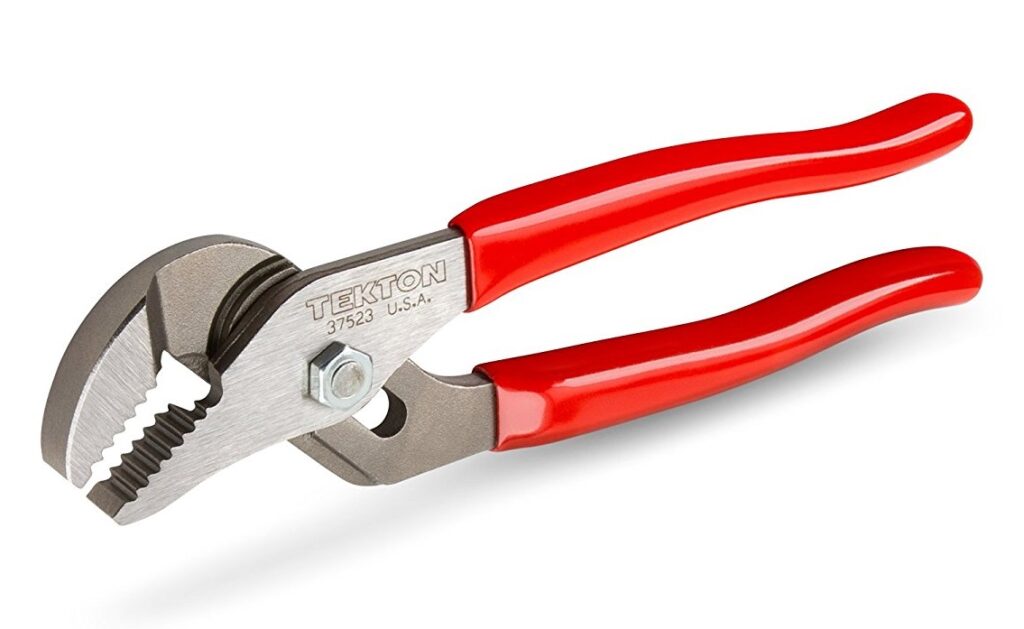
Tongue-and-groove pliers are those pliers which operate on the same principles as that of slip joints so that they can be a subset of that category instead of an entirely separate one. These pliers are also known as the water-pump pliers, multi-grips or Channel-locks. These are the types of pliers which find the majority of their use in the plumbing applications. The best thing about these types of pliers is that they also have an adjustable pivot which will adjust lot more than the pivot of a slip joint.
It is interesting to know that the water-pump pliers are found having seven different positions, which also varies depending upon the size and the requirement. The jaws of these pliers stay in connected in a parallel position and when required can open up wider. The head of such pliers are typically angled so that the handles are longer to allow access to pipes in a tighter space.
3. Locking Pliers: ( Types of Pliers )
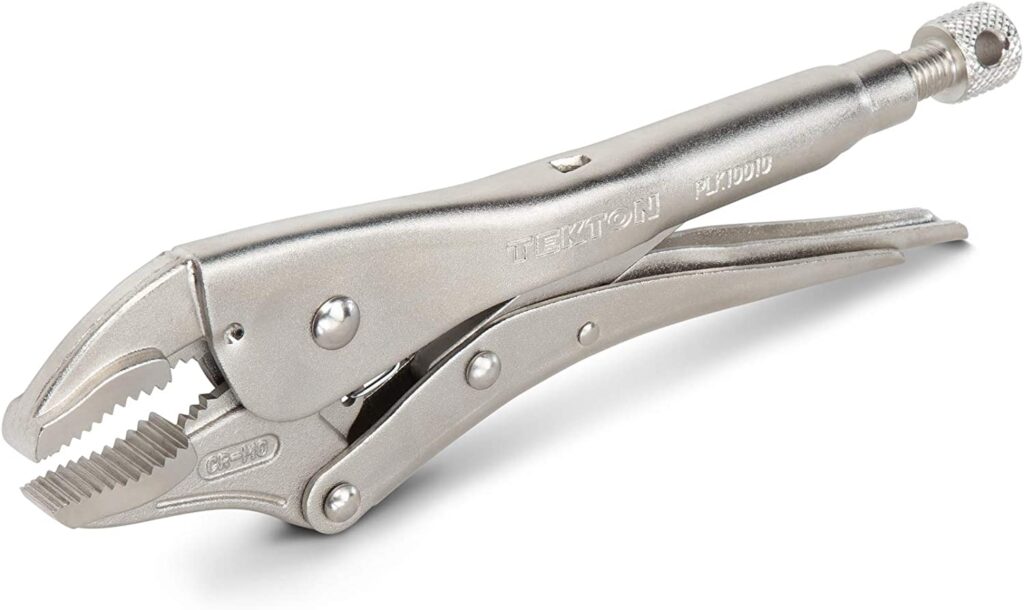
Locking pliers are one of the best working pliers used for clamping down things, mostly during times when having both hands free is helpful. These pliers are found having a double-lever action which allows them to act as a hand-held vise and therefore is also named as Vise-Grips that most of the people use for them.
The jaws of such type of pliers are found to close as it is expected from any other set of pliers with an added benefit of locking it down with a higher amount of pressure. The locking pliers releases the hold once the lever is triggered on the handle. The jaw width can be adjusted by dialling the screw drive at the end of the handle.
Most of the locking pliers can find action in a multitude of its applications. For instance, one can find a use of pipe wrenches, adjustable wrenches and clamps. These all are the pliers which can be used on the reusable fasteners, though before using you need to be really careful with this type of applications. There are chances which are good and needs to apply too much force with the clamping action, damaging the fasteners and fittings which are supposed to be applied to the locking pliers.
4. Linesman’s Pliers: ( Types of Pliers )
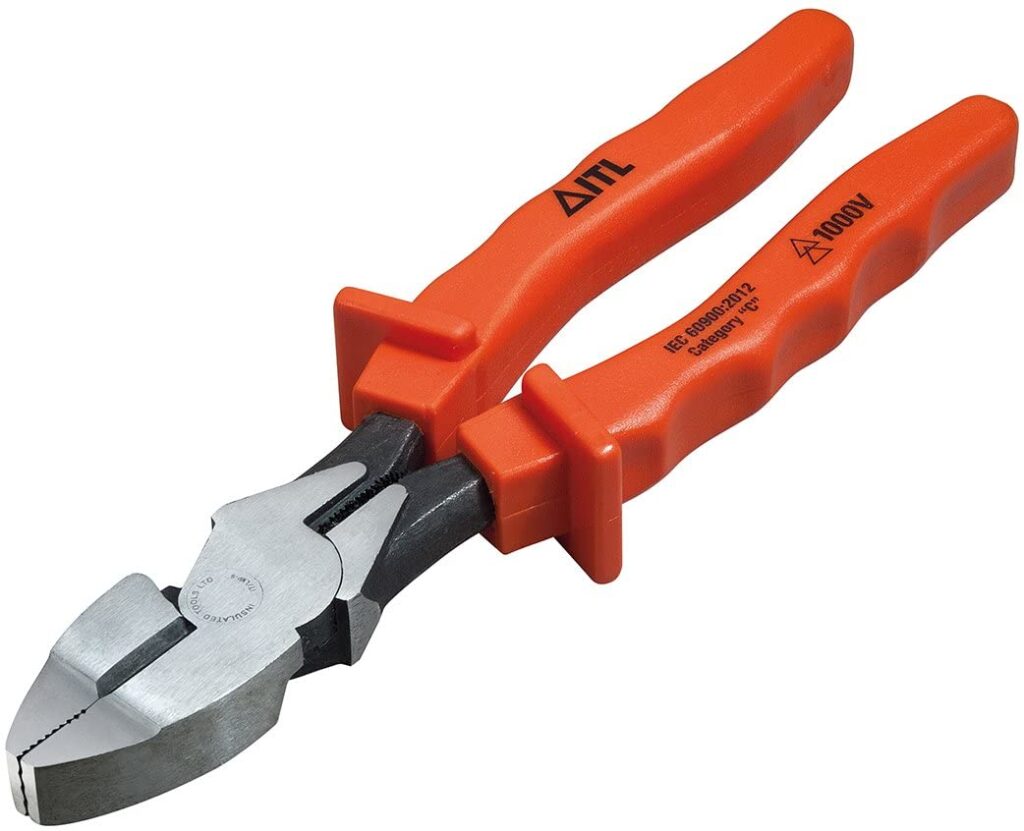
Linesman’s pliers are also termed as electrician’s pliers which have a hinge at a set pivot point. The jaws of these types of pliers are found having a flat front with a shallow serrations for flat gripping objects which also allows an electricians to twist the wires together wherever required. Just behind the front of the jaws these pliers include side cutters which is responsible for cutting the wires. Although they usually have various dipped handles and most amongst all are insulated but still one must not work on live connections with them.
5. Cutting Pliers: ( Types of Pliers )
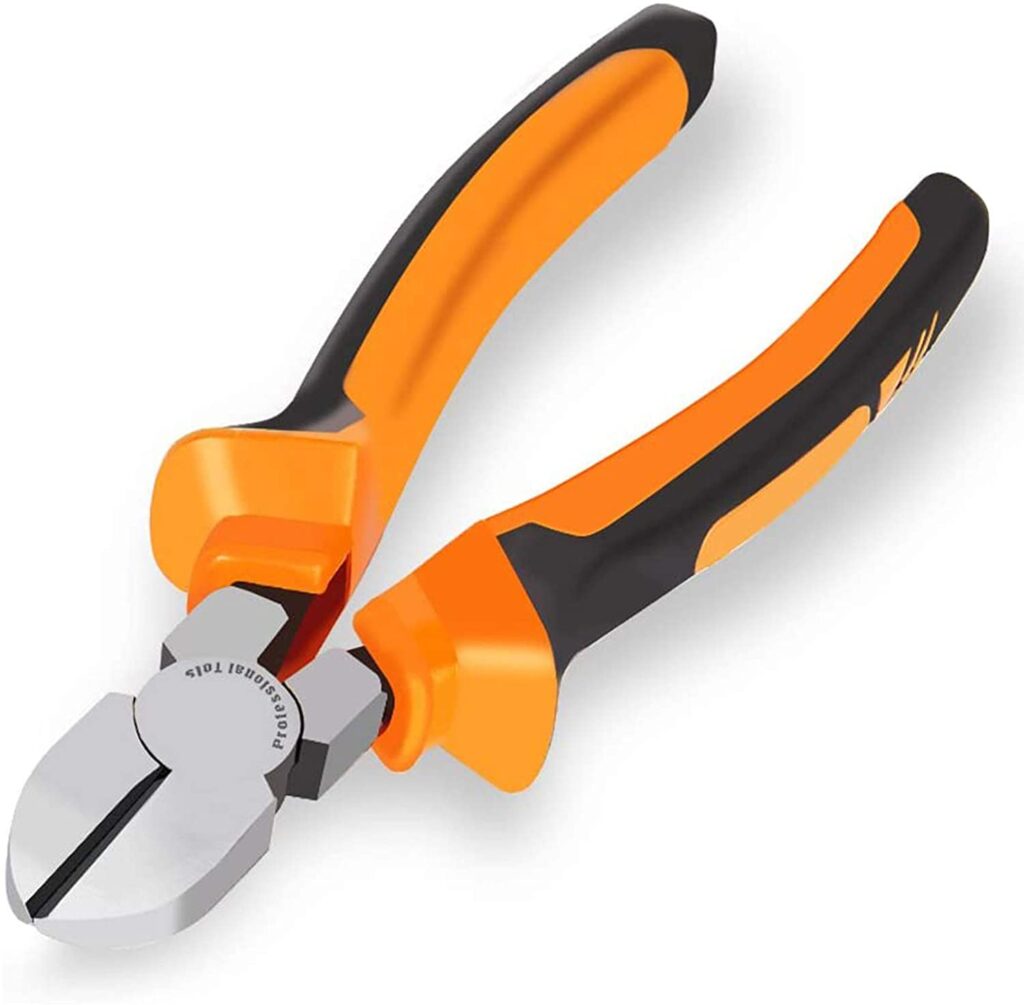
Cutting pliers are also termed as diagonal cutting pliers which are staple in the electrical tool kit. These types of feature are relatively short jaw that set up a particular angle away from the handles. The cutting knives are extended up to the tips which gives you an ability to accurately snip wires which are in a crowded gang box or even cut small nails and screws. Other than this there are some features which gives it a longer handle in order to get an additional leverage.
6. Wire Strippers: ( Types of Pliers )

Any electrician would be in need of a good set of wire strippers in order to do any type of wiring work. Considering its most basic form, it usually includes the wire cutting blades in order to cut the same wire gauges as the stripper holes covers along with a crimping tip. The main application of a wire stripper is by giving the user a cutting edge in a circular or elliptical shape in order to cut through the insulation and leave the bare wire whenever you pull the insulation off. Each hole gets a mark along with the wire size to which it corresponds.
Most of the wire strippers and crimpers are common candidates as a multi-tool for an electrician. There are various companies which carry the basic flat steel design in order to work with a more robust design in the form of needle nose pliers.
One more additional feature which is know is similar to screw shears which moves the crimper between the handles rather than the jaw tip, a blunt tip to grab, twist or pull wire and wire benders. These are quite popular because of the fact that they typically do all of their jobs as compared to the individual tools can.
7. Needle Nose Pliers: ( Types of Pliers )
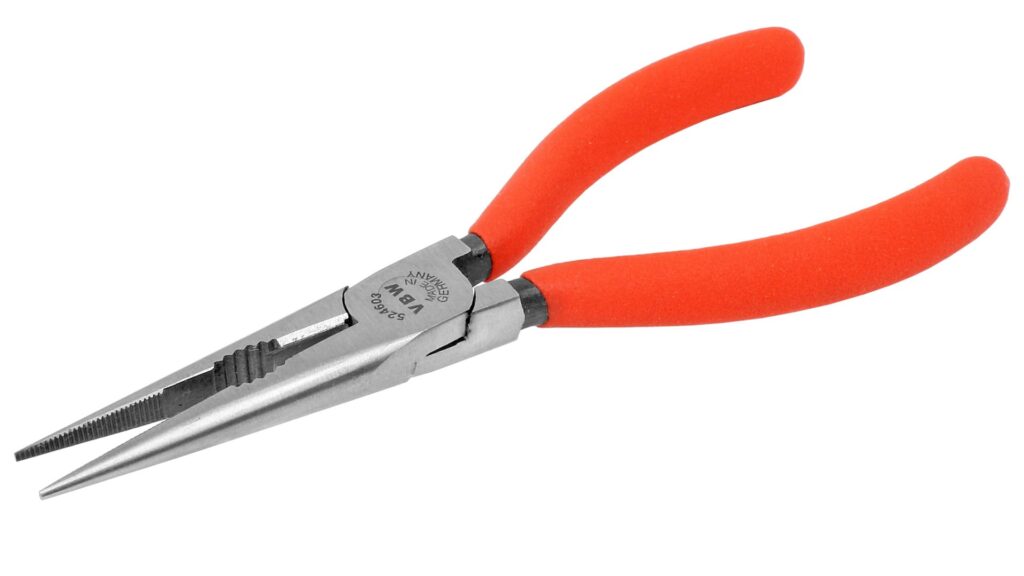
Needle nose pliers are termed as a longer jaw which tapers down to a point. These types of pliers work quite well for more delicate tasks or jobs which need to be done in any smaller space. For instance, bending wires, holding fittings, placing fasteners or even cutting, all these operations are handled well by the needle nose pliers which do a lot of work and are more heavy-duty plier as compared to all the others.
The jaws are found having a knurled surface and also includes side cutters. There are various models which have their tips bent at an angle varying from 45° to 90° in order to give an easy access in the awkward spaces.
8. Fencing Pliers: ( Types of Pliers )
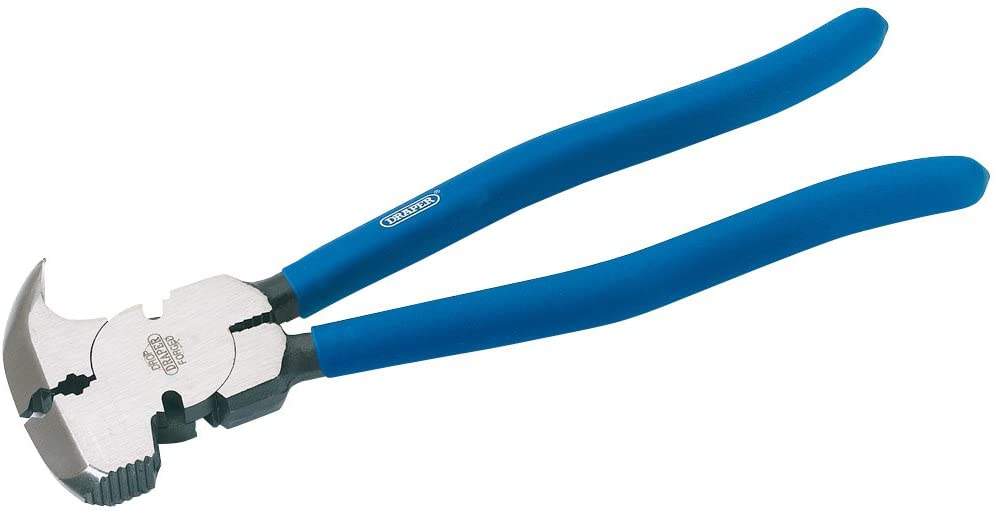
This is one of the most unique type of plier. It is shaped in a way wherein a hammer with two thin handles and a pivot point is stuck. The design is realistically quite intentional with another multi-function tool. The hammer shape is given to this plier for hammering staples into wooden fencing. Moving towards the top, there is a staple with the pincers at the top in order to remove it in case it’s easier than getting the spike on the opposite side to do the job.
Under the pincers, the designed shapes gives it the ability to grab and twist various wire gauges to connect fencing wire. Often, the inside of the handles just below the jaw having knurling allows you to grab and twist wire. The parts built into the sides are the wire cutters.
Pliers Construction and Parts
Nose or Jaws
This is referred to as the working end of pliers along with the parts that varies the most from one type to another type.
Fulcrum or Pivot Point
This is referred to as the Centre of the pliers where the jaws and handles get connected. The pivot point is the one which allows you to apply enough force for the jaws in order to perform their functions well.
Cutters
It is known as the sharpened section of the pliers which is located at the base of the jaws near the fulcrum of the pliers. The cutters are mostly used for cutting wires, cables or any other material.
Handles
This is the part which is held by the user. Handles can be of various shapes like straight or curved and mostly are coated with a material for better gripping and can also be bare metal as well.
Uses of Pliers
For Day To Day Jobs
There is a need of plier in a day to day life with some of the basic cutting jobs or severing wires, punching holes etc. So it is suggested to check out the correct type of pliers for your everyday tasks in order to make it easier.
Long Nose and Needle Nose
These types of pliers are commonly used for cutting, holding, pulling or repositioning. These are the tools that come in handy category while working in cramped spaces because of the thin and long length that compensates for areas where most pliers cannot even reach. If you are an electrician than make sure to note the size and gauge of the wires in order to make sure your instrument will comply.
Use of Lineman’s Pliers
These are the pliers which are used for gripping and contorting wires and cables. These types of pliers are found in an electrical or lineman industries. These are the types of pliers which are categorized as advanced and heavy duty for the professional use.
Diagonal Cutting Pliers
These types of pliers are completely used for cutting wires. The design of the diagonal cutting pliers is responsible for strong indenting and wedging.
Revolving Punch
These are used to punch through the tough materials for example, leather, rubber, plastic and more. Also these are commonly used for crafts and hobbies wherein this tool comes in handy the user.
For Reshaping Wire
There are times when there is a need of a tool which does a tougher work like twisting and reshaping the wire. Therefore here are some of the types of pliers that can help you in getting the work done safely and accurately.
Wire Twist Pliers
These are the instruments which can mold or manipulate the wires and metals. The wire twist pliers are also used for industrial jobs like iron or metalwork in a facility, hobbies at home.
Solid Joint Pliers
These types of pliers are used in case you are in need of repairing or installing wire. Solid joint pliers are responsible for pulling and twisting wire while maintaining a firm grip for an accurate result.
For Loosening and Tightening
The biggest constraint faced was slippage which can now be resolved by these types of pliers. These can be used for loosening, tightening, clamping or performing any various other constraints.
Slip Joint Pliers
These types of pliers are used to hold on the materials firmly with safely. Slip joint pliers are commonly used for gripping or loosening various applications like pipe, wire and many more.
Tongue and Groove Pliers
These types of pliers are mostly used in order to turn or hold nuts and bolts while maintaining a firm and safe grip. Tongue and groove pliers are most commonly used in plumbing industries and electrical industries.
Hog Ring Pliers
These are the types of pliers which make the installation easier and are designed in order to tighten the metal rings around the cords. Other than this hog ring pliers are found perfect for fencing and furniture work.
Locking Pliers
These are the pliers which are responsible for holding things safely and accurately. These are the tools which were designed to make clamping seamless and to hold anything from nuts to bolts to heavy-duty equipment.

No comments:
Post a Comment